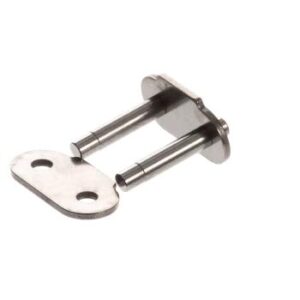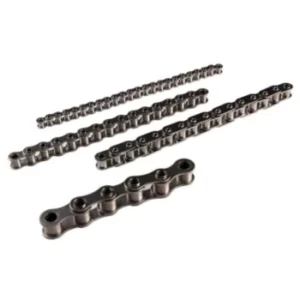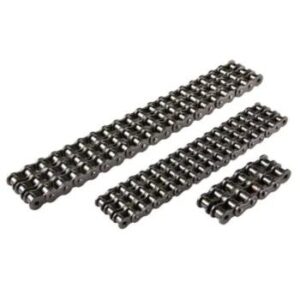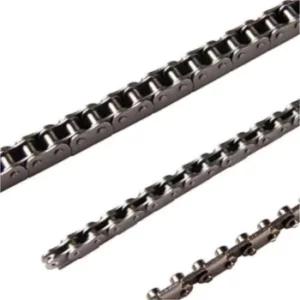Roller chains are used for power transmission in many applications. Most commonly used in bikes and motorcycles, they are also used in industrial conveyor systems. Roller chains are composed of alternating roller links and pin links. The pins are press-fit into side plates, and they may be single-strand or multi-strand. The multiple-strand versions have center plates and common pins, and they are designed to provide greater shear area.
Roller chains are generally manufactured from high-spec steel. As a result, they are durable and able to transmit high torques. They are also designed to withstand greater separation between shafts. They can also handle larger shaft centers. Typically, roller chains have a life span of about 15000 hours. In some cases, the manufacturer may adjust the life expectancy based on specific conditions, including the application’s use. Power-transtech, one of the best China roller chain manufacturers and suppliers, provides high quality, high-performance roller chains wholesale at very competitive roller chain prices! Contact us!
Roller Chain
Roller Chain
Roller Chain Power Transmission
Different Types of Roller Chains
There are several roller chain types, each with its own pros and cons. There are mainly two types of roller chains: single-strand chains and multiple-strand chains. Single-strand chains are characterized by a single-strand center, while multiple-strand chains have multiple strands. The inner and outer links are assembled on common pins to ensure their alignment. Single-strand chains are more common and are available in a wide range of sizes.
Single-strand chains are the most common type of drive chain. Their power rating capacity can cover a range of drive load requirements. Multiple-strand chains, on the other hand, can carry more weights without requiring increased pitch or linear speed.
Chains are widely used in industrial applications and are designed to provide superior durability. They are also able to support heavy weights with minimal stretch. The internal mechanical advantages of the links allow for high-efficiency chain joints that pass around sprockets. Chains can be made from special steels for specific environments.
Other specialty chains include hollow roller chains, sharp top roller chains, side roller chains etc. Some chains are self-lubricating, while others are super-strong and resistant to corrosion such as Nikken roller chain. Still, others are silent, double-pitch, or double-strand and are made for a specific application. The purpose of each type is to meet certain performance requirements.
Roller Chain Uses
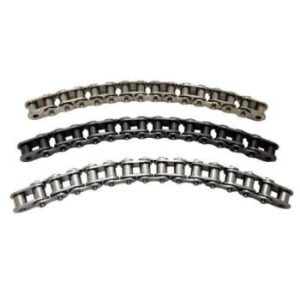
In addition to ensuring that the chain has adequate tension, you should also follow certain safety procedures. For example, measuring chain length when it is on the sprockets should be performed using an ANSI-specified measuring load.
Roller chains transmit mechanical energy between sprockets in power transmission applications. Common applications include bicycles, motorcycles, and conveyor systems in industry. Whether you need a chain to move a heavy load or simply transfer energy, a roller chain can make your job easier. Its simplicity makes it the ideal solution for many different tasks.
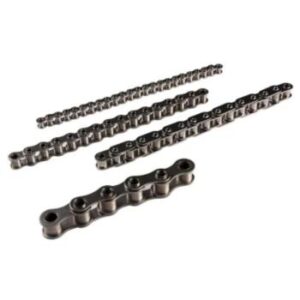
Different input parameters will determine the length, width, and pitch of the links. Moreover, you can change the dimensions of the roller and pin plates. The side plates of a bush roller chain can be straight or curved.
Tensile strength is the most common measure of a roller chain’s strength. It describes how much force a chain can withstand before it breaks. However, fatigue strength is equally important. The amount of steel used in a chain’s construction, the heat treatment of its components, and pitch hole fabrication are key factors in determining fatigue strength. Also, the design and thickness of the link plates and other components will also determine the chain’s fatigue strength.

